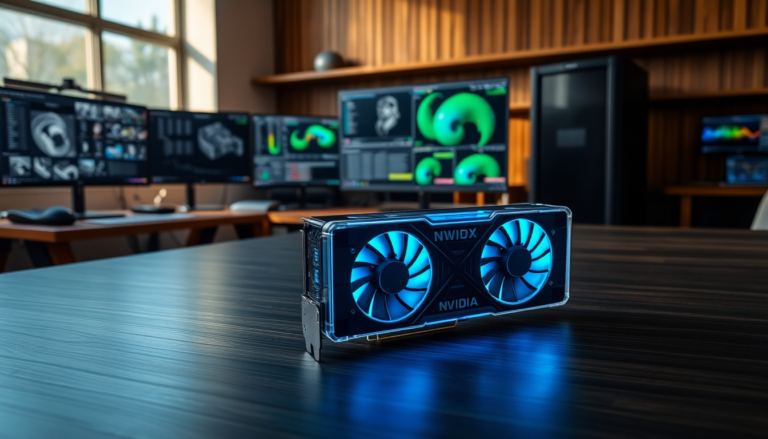Argomenti trattati
Introduction to the RTX Pro 6000 Blackwell
Nvidia’s upcoming RTX Pro 6000 Blackwell workstation GPU is generating significant buzz, particularly as it starts making appearances in online listings across Japan and Europe. Priced at over three times that of the inflated RTX 5090, this GPU boasts a staggering 96GB of GDDR7 memory and features more CUDA cores, catering specifically to the needs of professionals in high-performance computing.
Market Pricing and Availability
Recent listings indicate that the RTX Pro 6000 Blackwell is priced at approximately ¥1,630,600 in a Japanese retail outlet, translating to around $11,326. In the UK, the GPU is available for pre-order at Scan for £7,859.99 (approximately $10,433). Interestingly, the image displayed on Scan’s site is of the RTX 5000 Founders Edition, suggesting that it may be a placeholder while stocks are being prepared. Following its official announcement at GTC, a US-based IT retailer listed the GPU at $8,565, which reflects a 26% increase over its predecessor, the RTX 6000 Ada.
Target Audience and Use Cases
The RTX Pro 6000 GPU is designed primarily for professionals engaged in sectors like artificial intelligence development, data science, engineering visualization, and content creation. It aims to provide exceptional levels of GPU acceleration for complex simulations, real-time ray tracing, and high-end 3D rendering. The increased memory capacity and core count position this GPU as a robust solution for demanding computational tasks, making it a vital tool for users who require powerful processing capabilities.
Technical Specifications
Powered by the GB202 chip, the RTX Pro 6000 features an impressive configuration of 24,064 CUDA cores distributed across 188 streaming multiprocessors, each housing 128 CUDA cores. With a boost clock speed reaching 2,617MHz, this GPU stands out with its substantial 96GB of GDDR7 memory. In contrast, the RTX 5090, Nvidia’s top consumer-grade GPU, utilizes the same chip but with a slightly lower core count of 21,760 CUDA cores, a peak clock of 2,410MHz, and only 32GB of GDDR7 memory. This highlights the RTX Pro 6000’s superior architecture tailored for professional use.
Benchmark Performance Insights
Recent benchmarks have surfaced, revealing that the RTX Pro 6000 Blackwell scored 368,219 points in Geekbench’s OpenCL benchmark, slightly trailing behind the RTX 5090’s score of 376,858. Despite its advanced hardware, the performance gap raises questions as to whether the GPU can fully utilize its capabilities at launch. Factors such as power limitations and immature software drivers may restrict its performance during initial evaluations, suggesting that future updates could unlock more potential.
Value Considerations for Potential Buyers
Although the technical specifications of the RTX Pro 6000 Blackwell are undeniably impressive, the high price point raises concerns about its practicality for average enthusiasts. This GPU is tailored towards niche markets, focusing on enterprise-level solutions rather than mass consumer adoption. Potential buyers must carefully consider whether the performance enhancements and extensive memory justify the significant premium over existing models and consumer-grade alternatives such as the RTX 5090.
Stay Updated
For the latest news and in-depth reviews, consider following technology news outlets like Tom’s Hardware. By subscribing to their updates, you can stay informed about developments in the tech world and gain insights into the latest hardware trends.
Kunal Khullar, a seasoned technology journalist and contributor to Tom’s Hardware, specializes in PC components and peripherals. He welcomes any inquiries regarding building PCs and staying ahead in the technology landscape.

